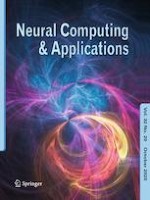08.11.2019 | Recent Advances in Deep Learning for Medical Image Processing
An integrated framework of skin lesion detection and recognition through saliency method and optimal deep neural network features selection
Erschienen in: Neural Computing and Applications | Ausgabe 20/2020
EinloggenAktivieren Sie unsere intelligente Suche, um passende Fachinhalte oder Patente zu finden.
Wählen Sie Textabschnitte aus um mit Künstlicher Intelligenz passenden Patente zu finden. powered by
Markieren Sie Textabschnitte, um KI-gestützt weitere passende Inhalte zu finden. powered by
